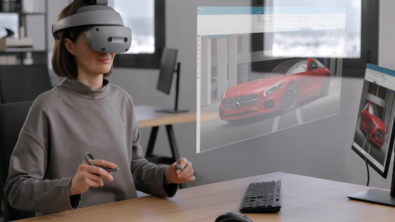Siemens AI at Design Automation Conference 2024

The Design Automation Conference, or DAC as it’s more commonly known, is one of the largest, oldest, and most preeminent EDA conferences in the world where companies come together to showcase their latest research and innovation in the realm of semiconductor design and manufacturing. Among the many topics of discussion, AI is a prominent one among participants, as companies are both called on to support the generative AI boom that started with the release of ChatGPT 3.5 in 2022, but to incorporate other forms of AI into their chip design and manufacturing processes.
Tony Hemmelgarn, President and CEO, Siemens Digital Industries Software along with many others, will be presenting new research and advancements in the fields of applied artificial intelligence in the semiconductor design industry. Check out a full list of Siemens presentations here, or tune in to DAC 2024 June 23-27th.
Building chips with AI and the Digital Twin
Depending on who you talk to the Digital Twin is either the newest thing in the semiconductor industry, or something that the industry has always had. The truth is that both are true. The semiconductor industry has long relied on domain specific Digital Twins of different aspects of the process design in order to design, test, and integrate in the virtual world before committing to manufacture.
The Comprehensive Digital Twin of the design, which attempts to more completely capture the design and allow analysis using not only traditional EDA methods but also Multiphysics simulation. This is just the beginning, however, as we are already moving towards the merging of the Design Digital Twin, with the Manufacturing Digital Twin to enable closed loop manufacturing aware design.
This evolution brings with it new challenges of exponentially increasing complexity, and multiple disparate engineering domains that need to work together. It is here where AI is coming to the rescue to help guide where engineers need to focus their effort, encapsulate domain knowledge that they need to perform a task, and transform data between different domains either directly or via surrogate models.
One of the tech talks held during DAC will delve into these major topics and more, exploring the ways manufacturers can develop and build increasingly complex and costly chips by leveraging the power of AI and the digital twin.
AI improves at the smallest level
While AI is set to make some sweeping changes across the breadth of the semiconductor industry, it will have an impact on a more granular level as well. Some key presentations exploring that include topics such as transistor-level simulation, and floor planning.
There is a lot of hype in the industry around AI, but behind the hype there is reality. That reality is that AI really is impacting virtually every aspect of semiconductor design. However, its not as simple as taking general purpose AI solutions and hoping they work for EDA, the risks are too high and when dealing with parts per billion (or trillion) in acceptable errors, hallucinations are not acceptable. What is needed are Verifiable AI solutions that deliver results that users can trust and that reduce the overall resources needed to complete a task. Siemens EDA has been able to leverage Verifiable AI to accelerate virtually every aspect of the design and verification process.
5G Downlink Datapath designs contain repeated structures, the same design instantiated multiple times, which make it very difficult to identify and place the macros in a way that is optimal for routability and performance. Traditional macro placement however, has been a very manual and iterative endeavor for these and all types of complex designs where the number of macros has grown dramatically, the sizes vary widely, and the interconnectivity between them is more intricate.
AI is a potential solution and a recent paper tests if P&R AI-driven macro placement capability could mimic the QoR (floorplan quality and design metrics), achieved by the expert engineers on this design but in a fraction of the time, and lessening the burden of manually placing the macros and running full-flow iterations required on our traditional flow.
These are just some of the presentations that will take place at DAC 2024. Check these presentations and many more out to learn more about the applications of AI in EDA.
Siemens Digital Industries Software helps organizations of all sizes digitally transform using software, hardware and services from the Siemens Xcelerator business platform. Siemens’ software and the comprehensive digital twin enable companies to optimize their design, engineering and manufacturing processes to turn today’s ideas into the sustainable products of the future. From chips to entire systems, from product to process, across all industries. Siemens Digital Industries Software – Accelerating transformation.


